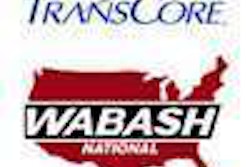Year-over-year index down 10.8 percent
The American Trucking Associations’ advanced seasonally adjusted For-Hire Truck Tonnage Index climbed 3.0 percent in January 2009, marking only the second month-to-month increase in the last seven months. Still, the gain did little to erase the revised 7.8 percent contraction in December 2008.
In January, the seasonally adjusted tonnage index equaled just 104.7, its second-lowest level since October 2002. In January, the nonseasonally adjusted index fell 4.4 percent from the previous month to 97.2. ATA recently revised the seasonally adjusted index back five years as part of its annual revision. Compared with January 2008, the index declined 10.8 percent, which was slightly better than December’s 12.5 percent year-over-year drop.
ATA Chief Economist Bob Costello said that there was no reason to get excited about January’s 3.0 percent month-to-month improvement. “Tonnage will not fall every month, and just because it rises every now and then doesn’t mean the economy is on the mend,” Costello said. “Furthermore, tonnage is contracting significantly on a year-over-year basis, which is highlighting the current weakness in the freight environment.” Costello also noted that any sustained recovery in tonnage is still months away.
Freight outlook seen deteriorating
FTR Associates (www.ftrassociates.net) says that its mid-month North American Commercial Truck and Trailer Outlook flash report for February showed a further weakening in freight and equipment demand. With economic activity on pace to worsen in the first quarter from the deep declines already registered in the fourth quarter of 2008, FTR says the industry is experiencing sharp drops in freight volume equal to the very low levels of the 1982 recession.
FTR expects year-over-year tonnage freight drops to bottom at -10.3 percent in the second quarter before beginning a slow rise to a still stressful -6.6 percent in the fourth quarter. For truckers, this promises steadily increasing pressure on rates into the summer months, FTR says; when coupled with tightened availability of credit, these freight numbers translate into very low truck production numbers. The already-low January order levels could be the highest of the year, FTR says.
“The continued economic deterioration puts us on course for a minus-10 percent freight year – the worst market in a generation,” says Eric Starks, president of Nashville, Ind.-based FTR.
In Brief
Schneider National implemented further contingency plans intended to protect associates and customers during the recession. Steps include suspending pay increases in 2009 for all associates and deferring funding for retirement plans and 401(k) company matches until yearend.
Trade using surface transportation between the United States and its North American Free Trade Agreement partners, Canada and Mexico, was 13.1 percent lower in December 2008 than in December 2007, dropping to $52.9 billion, according to the Bureau of Transportation Statistics of the U.S. Department of Transportation. December was the second straight month with a year-to-year decline of greater than 13 percent. The value of U.S. surface transportation trade with Canada and Mexico fell 12.8 percent in December from November.
The Illinois House Transportation Committee did not call into consideration a proposed bill that would have doubled state truck registration fees and the Commercial Distribution Fee (CDF). Rep. LaShawn Ford (D-Chicago) said he and committee members received hundreds of calls from truck operators in opposition to the proposed bill.
Multi Service Corp. (www.multiservice.com) launched a fuel card rebate program designed to help small and medium-sized over-the-road fleets pool their buying power. The rebate program offers fleets up to 10 cents back for gallons purchased within the fuel card rebate network throughout the United States and Canada.











